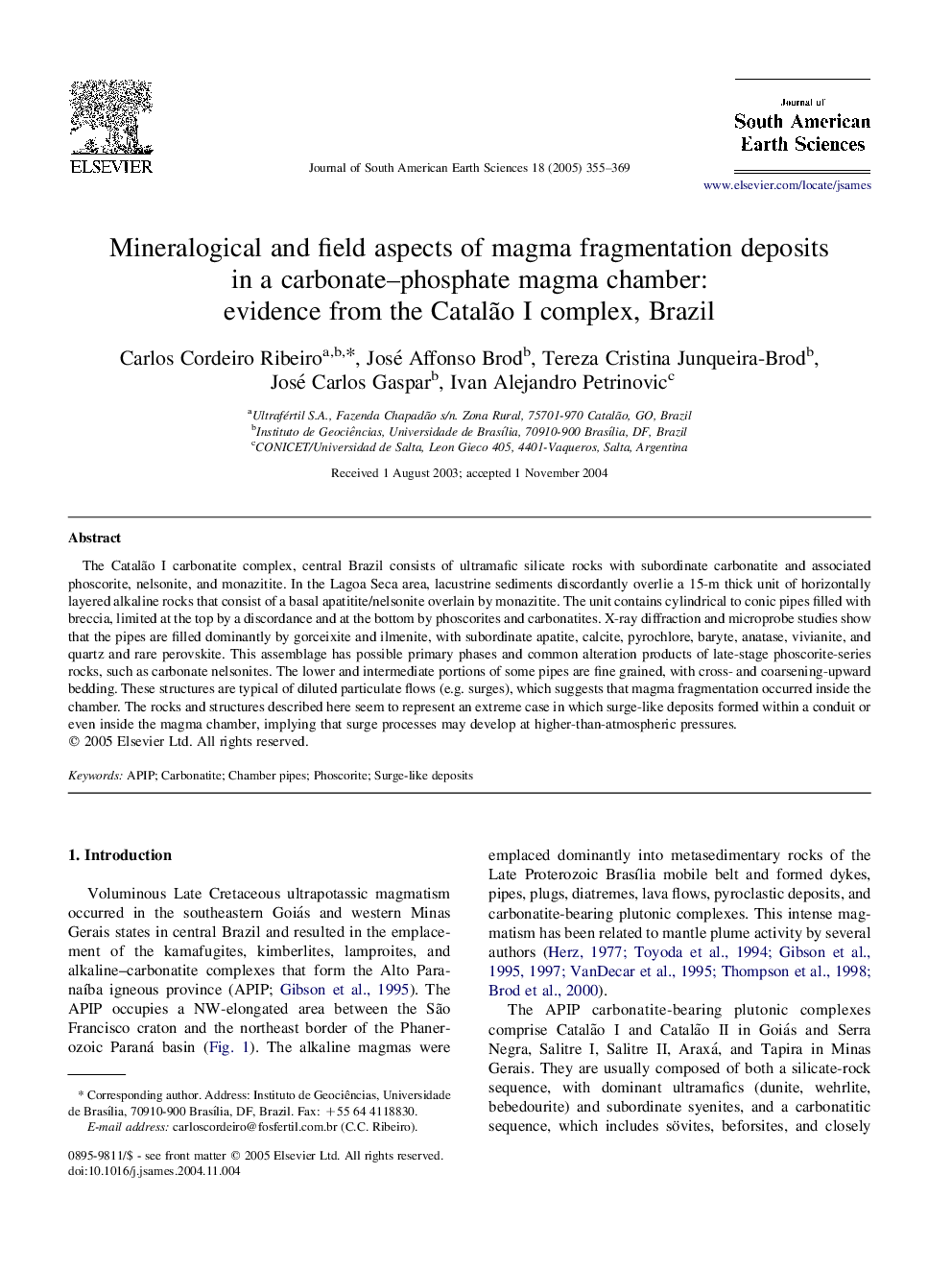| Article ID | Journal | Published Year | Pages | File Type |
|---|---|---|---|---|
| 9524461 | Journal of South American Earth Sciences | 2005 | 15 Pages |
Abstract
The Catalão I carbonatite complex, central Brazil consists of ultramafic silicate rocks with subordinate carbonatite and associated phoscorite, nelsonite, and monazitite. In the Lagoa Seca area, lacustrine sediments discordantly overlie a 15-m thick unit of horizontally layered alkaline rocks that consist of a basal apatitite/nelsonite overlain by monazitite. The unit contains cylindrical to conic pipes filled with breccia, limited at the top by a discordance and at the bottom by phoscorites and carbonatites. X-ray diffraction and microprobe studies show that the pipes are filled dominantly by gorceixite and ilmenite, with subordinate apatite, calcite, pyrochlore, baryte, anatase, vivianite, and quartz and rare perovskite. This assemblage has possible primary phases and common alteration products of late-stage phoscorite-series rocks, such as carbonate nelsonites. The lower and intermediate portions of some pipes are fine grained, with cross- and coarsening-upward bedding. These structures are typical of diluted particulate flows (e.g. surges), which suggests that magma fragmentation occurred inside the chamber. The rocks and structures described here seem to represent an extreme case in which surge-like deposits formed within a conduit or even inside the magma chamber, implying that surge processes may develop at higher-than-atmospheric pressures.
Keywords
Related Topics
Physical Sciences and Engineering
Earth and Planetary Sciences
Earth and Planetary Sciences (General)
Authors
Carlos Cordeiro Ribeiro, José Affonso Brod, Tereza Cristina Junqueira-Brod, José Carlos Gaspar, Ivan Alejandro Petrinovic,
